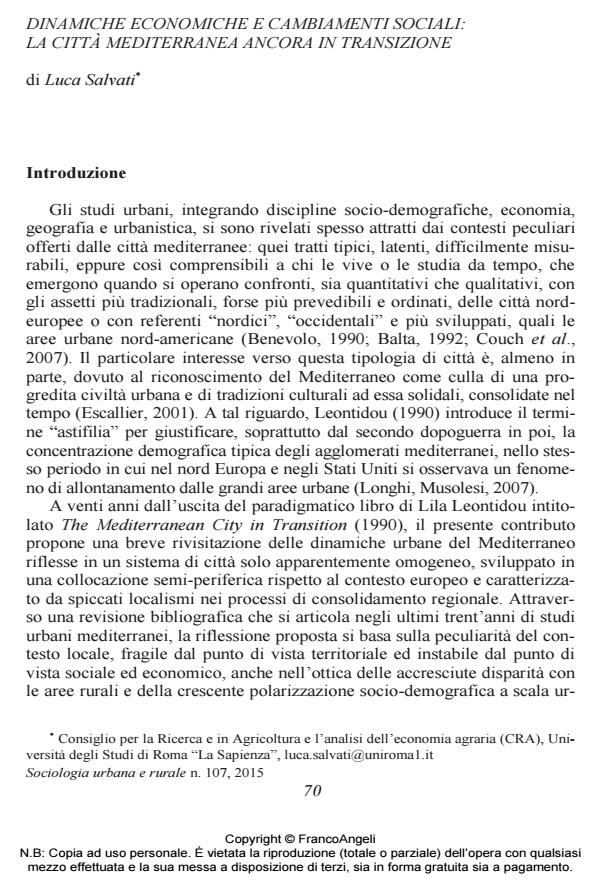Economic Trends and Social Changes: the Mediterranean City still in Transition
Journal title SOCIOLOGIA URBANA E RURALE
Author/s Luca Salvati
Publishing Year 2015 Issue 2015/107
Language Italian Pages 18 P. 70-87 File size 144 KB
DOI 10.3280/SUR2015-107006
DOI is like a bar code for intellectual property: to have more infomation
click here
Below, you can see the article first page
If you want to buy this article in PDF format, you can do it, following the instructions to buy download credits

FrancoAngeli is member of Publishers International Linking Association, Inc (PILA), a not-for-profit association which run the CrossRef service enabling links to and from online scholarly content.
Twenty years since The Mediterranean city in transition by Lila Leontidou, the present study formulates an interpretative framework of recent urbanization processes in the "Mediterranean cities", with a special focus on southern Europe. An interpretation of Mediterranean urbanities is proposed according to local governance and (changing) socioeconomic structures. The interpretation is based on the characteristics of the socio-demographic and production local context in view of the persistent crisis affecting economic systems, institutions and the society. In this way an unifying approach to the development of different forms of Mediterranean cities is illustrated.
Keywords: Mediterranean, Urban System, Informality, Social Change, Economic Structure, Regional Planning
- Migration as an active strategy to escape the ‘second closet’ for HIV-positive gay men in Barcelona and Rome Cesare Di Feliciantonio, in Social & Cultural Geography /2020 pp.1177
DOI: 10.1080/14649365.2018.1541248
Luca Salvati, Dinamiche economiche e cambiamenti sociali: la città mediterranea ancora in transizione in "SOCIOLOGIA URBANA E RURALE" 107/2015, pp 70-87, DOI: 10.3280/SUR2015-107006